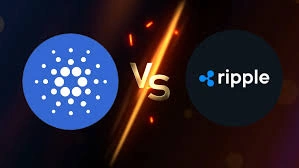Cardano vs XRP: Which Crypto Holds More Long-Term Value?
Table of Contents

In the battle of altcoins, few rivalries draw more attention than Cardano vs XRP. These two giants have massive followings, strong fundamentals, and very different visions of the blockchain future. But for investors trying to pick a winner, which one truly holds more long-term value?
Let’s break it down — without the tribalism — so you can make an informed, strategic crypto move.
For more insights and updates on the latest trends in crypto, be sure to check out our Nifty Finances platform, which is your gateway to smarter financial decisions in the digital economy.
The Missions: Two Different Worlds
Cardano (ADA) – The Academic Visionary
- Created by Ethereum co-founder Charles Hoskinson
- Focuses on scalability, sustainability, and peer-reviewed development
- Built to bring smart contracts and dApps to the masses, especially in underbanked regions like Africa
- Emphasizes decentralization and scientific rigor
Cardano is often seen as the “slow and steady” project — not flashy, but methodically building a foundation for the future.
XRP (Ripple) – The Banker’s Blockchain
- Developed by Ripple Labs for fast, low-cost cross-border payments
- Targets banks and financial institutions as its core users
- Not decentralized in the purest sense, but highly enterprise-focused
- Uses a consensus algorithm instead of traditional PoS/PoW models
XRP is all about speed, liquidity, and integration with the existing financial system, rather than disrupting it.
Technology and Use Case Comparison
| Feature | Cardano (ADA) | XRP (Ripple) |
|---|---|---|
| Consensus | Proof of Stake (Ouroboros) | XRP Ledger Consensus |
| Use Case | Smart contracts, DeFi, identity | Cross-border payments, liquidity |
| Speed | ~250 TPS, scaling with Hydra | ~1,500 TPS |
| Fees | Very low | Extremely low |
| Ecosystem | Growing dApp and DeFi scene | Enterprise-focused solutions |
✅ Cardano shines in decentralization, governance, and future-proof scalability.
✅ XRP dominates in transaction speed and real-world partnerships with major financial institutions.
Legal and Regulatory Risks
This is where XRP faces a unique challenge.
Ripple Labs has been embroiled in a legal battle with the SEC, which accused XRP of being an unregistered security. While Ripple has won key victories, regulatory uncertainty still looms — and that can impact investor confidence.
Cardano, on the other hand, has largely avoided regulatory drama due to its transparent development process and token distribution model.
Community and Adoption
- Cardano’s community is known for its passionate, long-term holders. Over 60% of ADA is staked — a strong indicator of investor trust and commitment.
- XRP’s community is one of the most vocal and resilient in crypto, with a deep belief in the project’s future, despite legal hurdles.
Both communities are battle-tested, but ADA has a broader appeal in the Web3 and DeFi scene, while XRP is laser-focused on institutional money.
Cardano vs XRP? So, Which One Should You Pick?
Choose Cardano if you:
- Believe in the long-term vision of decentralized apps and smart contract ecosystems
- Value peer-reviewed, scientifically-driven development
- Want to invest in a platform that could power future DeFi and identity solutions
Choose XRP if you:
- Believe the traditional finance system will embrace crypto rails
- Want exposure to fast, global payment solutions
- Are comfortable with regulatory risk in exchange for explosive upside
Cardano vs XRP isn’t about which is better — it’s about which aligns with your investment thesis.
- ADA is building the future of Web3 from the ground up
- XRP is integrating crypto into the existing financial world
Both have long-term potential. Both have risks. But if you understand their strengths, you don’t have to choose sides — you can diversify wisely.
Smart investors don’t ask who wins — they ask what role each can play in their portfolio.